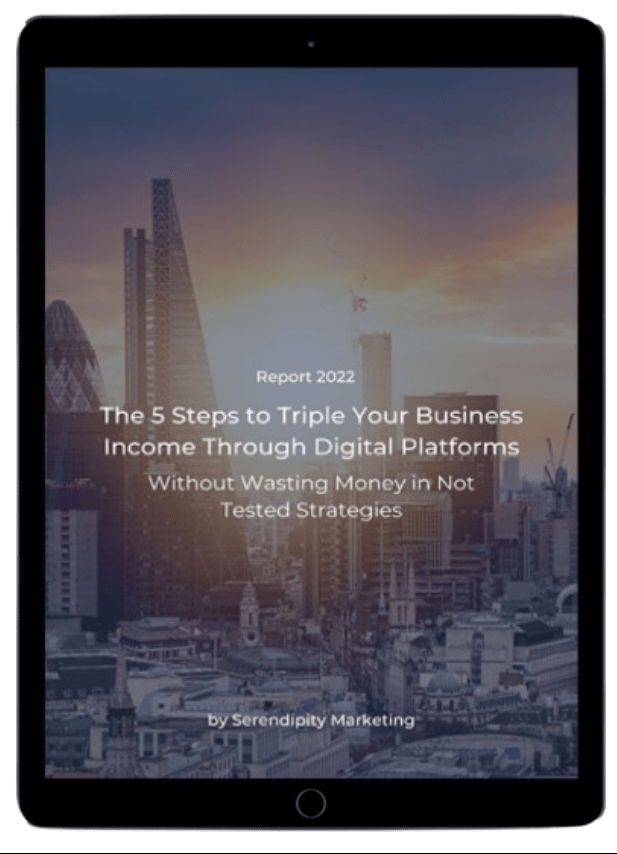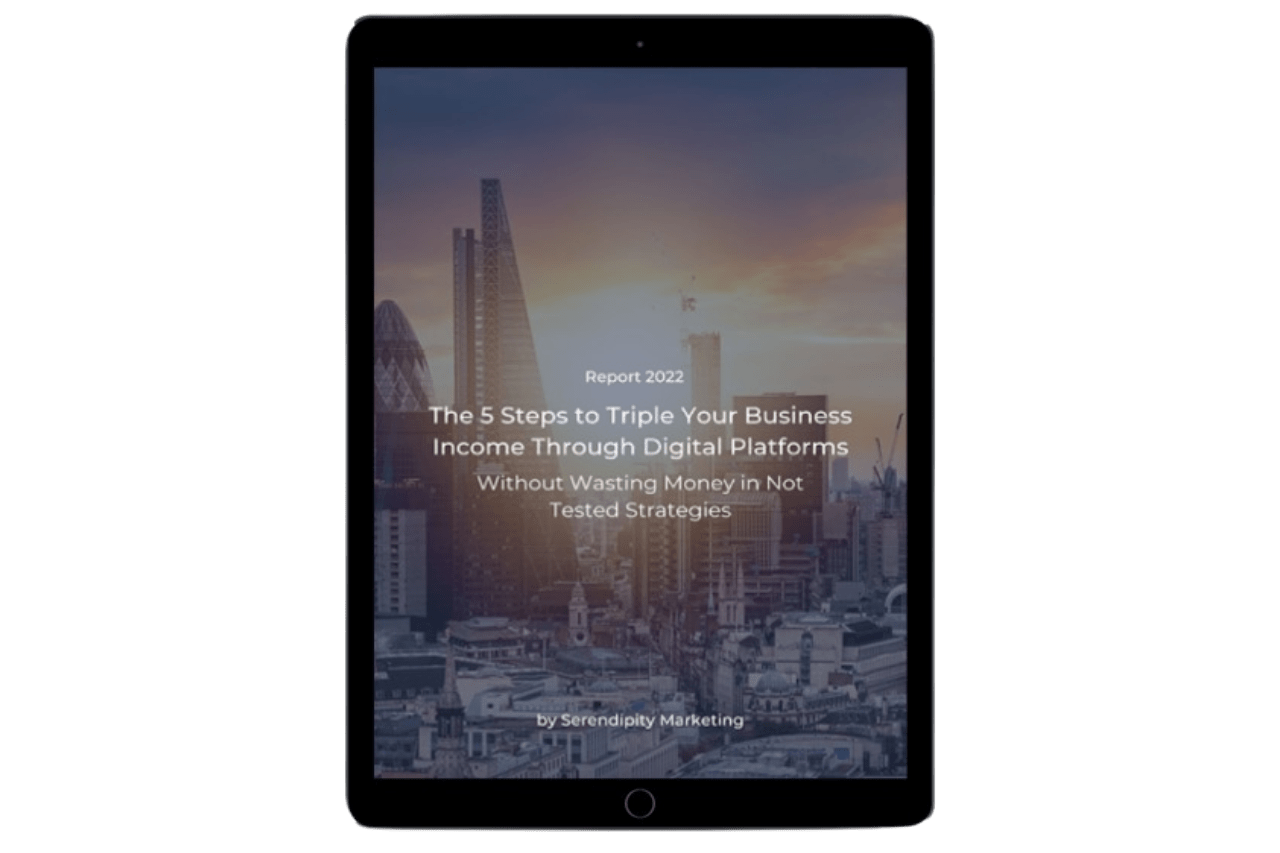Even if a large of the digital communication is moving to social media direct messages, email marketing campaign is still working very extremely well for both B2B and B2C.
Sometimes, it may look like emails aren’t working anymore, but that’s just because your email marketing strategy isn’t adapting to the new trends and market changes.
In this article, we're going to be talking about testing and tweaking as hacks to triple your email marketing results.
Hi there, and welcome back to Serendipity Marketing. We're a digital marketing agency with a mission to help small businesses grow by applying psychology to their marketing strategies.
Before we get started, please go ahead and follow us on LinkedIn, Facebook, or Instagram.
Iterating your email marketing starts with your contacts, and there are really five steps.
So, now we are going to quickly go over the five steps to give you an overview of them, and then we're going to go in-depth on what you really need to do to tweak and test, so that way you can maximize your revenue from email marketing.
1. Understand your products/services
We know it may sound weird as of course you know very well your products or services.
But what we mean by this is to get to deeply understand how they're really being used.
This way, you can figure out what messaging you need to put to maximise your sales.
2. Get feedback from customers
Customers may be happy with what you're doing, they may be sad, and they may be unsatisfied, and this feedback will help you tweak and make things better.
3. Identify your customer
At this point, you want to go into identifying your customer based on demographics, psychographics, behavioural, environmental factors, and more.
This allows you to segment out your list and send people messages based on what they are really looking for versus something that's generic to all your contacts.
4. Always keep your customer profiles up to date
You don't want to be keeping sending people emails to their old email address, or to bounces, or to people who don't want your emails.
5. Survey your customers
Do it often to gain insights on changing habits, preferences, and interests, so that way you can keep up with the latest trends that are happening in the world.
So now, let's dive into the specifics.
How do you develop relationships with lead nurturing?
Well, email marketing is all about that one-on-one relationship.
You can put the person's first name in the email. That helps.
You can develop that bond between that prospect or that person in your contact list by using words like you or I within your email copy. It helps build a deeper connection.
By segmenting, you can also make your emails more personalized, by having that story within your brand. This helps as well.
In addition to this, there is a lot of technical housekeeping that you need to do to maximise your email efforts.
For example, you're going to have errors, and these errors could be solved in many different ways. And the errors could exist in many different formats depending on the type of emails that you're sending.
For instance, if you have a welcome email at the beginning of your email marketing campaign, are you giving them a freebie? Because your open rates are really slow or people are unsubscribing, maybe you're not giving someone any value in the welcome email, or your activation emails aren't really providing any value.
Or, when you're doing marketing emails, you're just selling and you're not educating enough.
Or, if people are on your list for a long time and they slowly stop opening up your emails, you may not have any retention emails or reactivation emails.
These are all things to consider when you're sending out emails.
How to avoid going to spam
In addition to this, you'll find that emails over time go into spam.
Are you getting spam complaints?
If so, adjust your emails, because they may feel that your emails are too aggressive or too quote, unquote spammy.
Or, are you sending emails to people who don't want them?
Because if that's the case, even if they don't unsubscribe, if they don't open up your emails and they ignore them, it starts causing your emails to go into the spam box, not just for them, but for everyone.
And that's why you want to clean your list on a regular basis.
And that's really how you bypass the spam filter.
You don't send emails to people who aren't opening them.
If you send an email to someone four times, they don't open any of them, stop sending them more emails in the future.
And that's why your audience may not be receiving any of your emails. Because if you keep sending them emails, you'll find that Gmail and Outlook are notoriously known for putting all emails in the spam box or the majority if you continually send emails to people who don't want them.
And I also recommend that you look at your list, clean it on a regular basis.
You don't use misspellings. You don't use spammy words, like free in all caps in the subject line.
All these things can really hurt your deliverability.
Check for Hard Bounces
Check for hard bounces too, because if an email hard bounces, that email probably doesn't exist or it's no longer available, so remove them.
Check for soft balances, that's temporary.
So, maybe you stop sending them emails for a few weeks, and then maybe it fixes itself over time.
In general, the email tool that you use, no matter which one you use, pretty much all of them have been reported.
So, view the reporting, view the segmentation, view what's working, from subject lines to the call to action.
And this will give you an idea of what you should do more of and what you should do less of.
Create personas
We also recommend that you create personas, because when you create personas and when you see these patterns and you create personas based on the patterns that you're seeing, you can identify different personas, track them, and not in a sleazy or creepy way, but nonetheless, you can track them, segment them, and then send them specific offers to maximize your conversion rate.
Because there are many different personality types, you know?
For example, what a woman wants to see in an email in many cases is going to be different than what a man wants to end up seeing.
But on the same note, we both love seeing sales.
Alright, now before we move on with the next email marketing campaign tips, have you ever thought about how much you should invest in marketing to generate constant business growth? Click the button below to calculate the ideal marketing budget you should allocate for higher visibility, engagement, and profit.
How much should you invest in Digital Marketing?
Predictive model
We also recommend creating a predictive model. And here's what we mean by that. If you have listed within your email tool, and with these lists, for example, we have a list of all past buyers.
We know that if we email out my past buyers for anything new, our conversion rate and revenue are through the roof because 20% of our new purchases tend to come from past buyers.
So, we really treat that list like it's gold because it's an easy way for us to generate more and more revenue.
And you can start building out some modeling every time you're creating new offers so that if you email this list, you know your average conversion rate, and this is how many sales you’re going to get, which then helps make your business more predictable.
And then you can use this data to figure out where you should invest.
And that's why we do things like monitor our click-through rate, our conversion rates, and our open rates. Because it all gives us an idea of what to expect from our emails.
And if you notice things like your open rate going down, we recommend that you go and try a different strategy.
If you're using the same concept that's worked for you for years but it slowly stops working, it's probably because your list is getting used to it and you want to try something new.
For example, you could try to send an email that's related to a trend or a news event, and that could increase your open rates.
What is a good open rate or click-through rate?
Well with companies with 1 to 10 employees who sent 16 plus campaigns or emails in a month, the medium open rate was 35% and click-through was 7%.
Now, if you're a much bigger company, you're going to see your rates slowly decline, because, over time, you probably have bigger lists from what we're seeing, versus companies who have much smaller employee count, they tend to have smaller lists that tend to be engaged with.
As your list gets bigger and bigger, usually you'll see your rates drop down. And to track all of this, if your email tool doesn't give you what you need, you can also use Google Analytics, set up campaigns with them, and use UTM tracking variables.
So, this way, you can track everything in Google Analytics as well.
A/B test
We also recommend that you A/B test some of your emails. All the tools out there have this feature.
Try different subject lines, and call to actions. It'll give you an idea of what's working and what's not working.
Email marketing campaign retargeting
And our favourite strategy is email marketing retargeting. And what we mean by that is that if you send someone an email and they open it, you can remarket them around the web and show them banner ads for my products and services to really try to bring brand awareness, bring education, and eventually convert them into a customer.
And that's why we really love email marketing campaign retargeting or email retargeting because it's one of the highest conversion rates that we've seen.
If you need help with your email marketing campaign management and creation to grow your business in terms of visibility, engagement, and profit, contact us today and speak with one of our digital marketing experts to see how we can build the bridge between the point you’re standing at right now and your goals.



